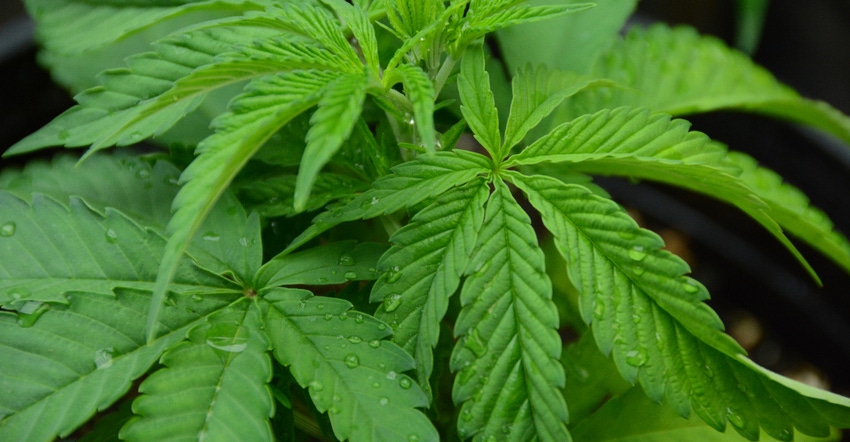December 10, 2019

Cannabis has been in the news a lot lately. Why does that concern us at USDA? Well, whether it’s industrial hemp, medical cannabis, or recreational marijuana, it’s all considered marijuana, which was all illegal according to the federal government before the 2018 Farm Bill. As such, USDA programs — including conservation technical and programmatic assistance — were not available to anyone in violation of federal law. But in the 2018 Farm Bill, we saw some major changes in policy, and those changes were implemented in 2019.
Humans have used cannabis for thousands of years. As a plant, various species of the Cannabis genus have been cultivated. The most common species is Cannabis sativa. We recognized the plant’s value for fiber, medicine and religious utility. (By the way, just to clear up a common misconception, the marijuana plant isn’t native to this country, so marijuana was not the staple of traditional North American Indian pipe ceremonies.) Just like with other modern crops, our ancestors selected the most desirable characteristics, and we’ve ended up with plants that have similar features but very different internal chemistry.
Think of corn as an example. Flint corn, dent corn, flour corn, sweet corn, popcorn — it’s all corn. It’s hard to tell the difference when it’s young, but some of its differences manifest themselves in stature, color or flavor.
New federal policy says farmers can now grow the variety of cannabis that contains very low levels of tetrahydrocannabinol, or THC, which is the psychoactive constituent in cannabis, as an industrial hemp crop. So basically, farmers can produce industrial hemp for the strong fibers in the stems, the oils in its seeds, and the seed itself to sell for industrial hemp fiber and oil production purposes. Farmers must report industrial hemp acres to the Farm Service Agency, and they’ll have to comply with their state’s USDA-approved growing and license standards. Find more information at farmers.gov.
Farmers are always looking for opportunities to diversify their operations by producing a money-making crop. Hemp is popular right now, and it looks like a good option. Whether it stays popular in the marketplace or if it can be produced in such a way that it stays profitable remains to be seen.
I remember back in the ’80s when canola was touted as an alternative crop for Midwest farmers. From a growth habit, this mustard family plant was planted and harvested on a schedule similar to winter wheat. Canola oil is still popular, but the tiny seeds were difficult to harvest without significant modifications to existing farm equipment. Not all local elevators could handle the crop either. As a result, canola eventually fell out of favor.
From what I’ve seen, industrial hemp will also need some specialized equipment, and that equipment will vary depending on whether you are harvesting the stalks for those long, durable fibers, or if you are producing seed. We’ll also need a network of processing facilities. How strong is that demand?
Now that we have some of those legal issues out of the way, we can work with industrial cannabis farmers. But the Natural Resources Conservation Service still has some work to do. We need to learn more about cannabis production techniques and evaluate agronomic characteristics so we can see how it fits in from a conservation standpoint. We’re already diving in to become familiar with plant growth habits, tillage, fertilizer needs and pesticide options to see how they might affect soil erosion or water quality.
The other big question involves long-term market and consumer trends for hemp products. Will the demand stay high — pun intended — or will it just be a fad?
Dozier is the Illinois state conservationist. Direct comments or questions to [email protected].
About the Author(s)
You May Also Like




